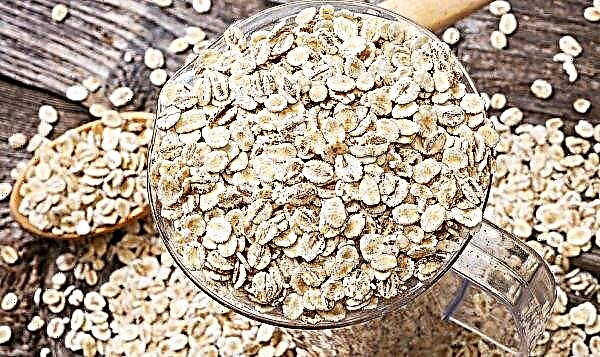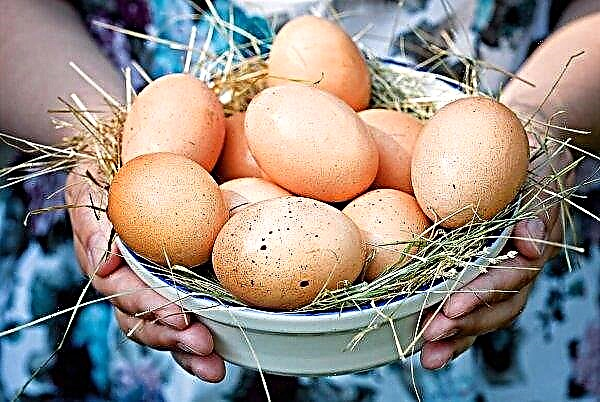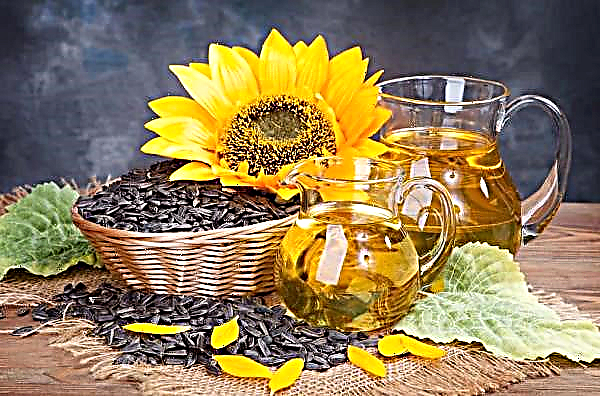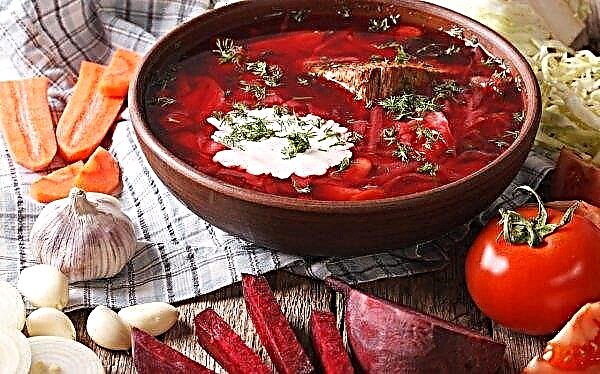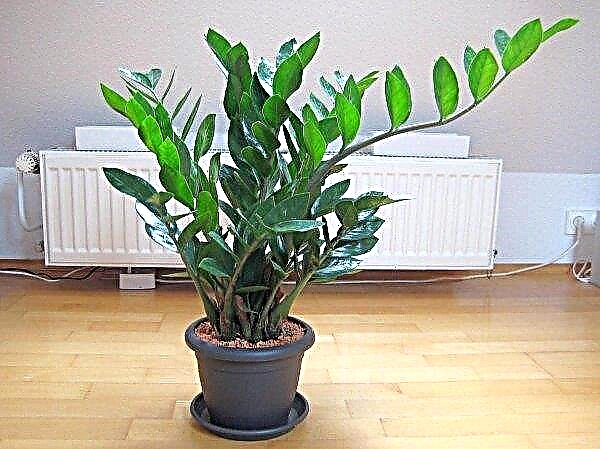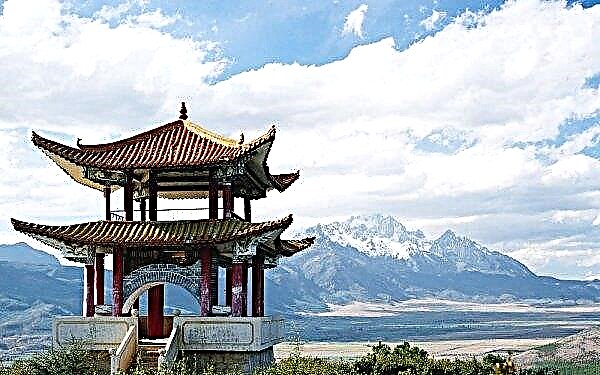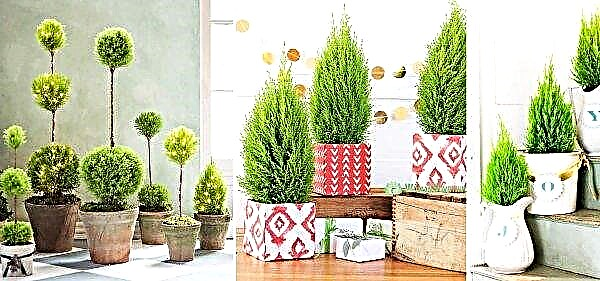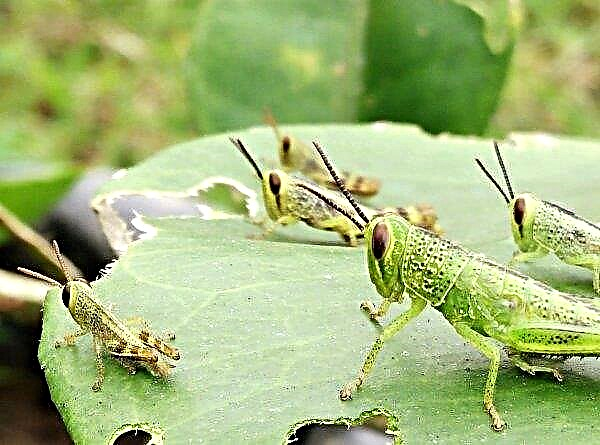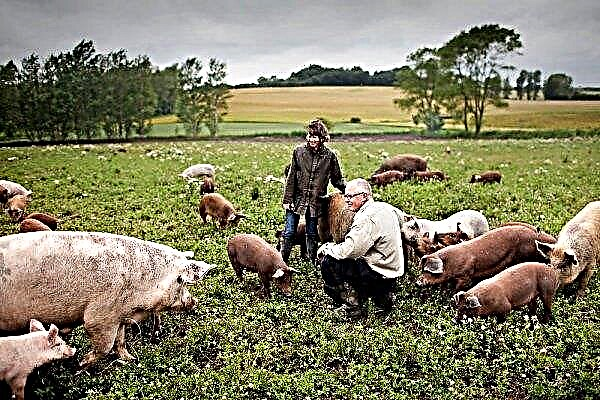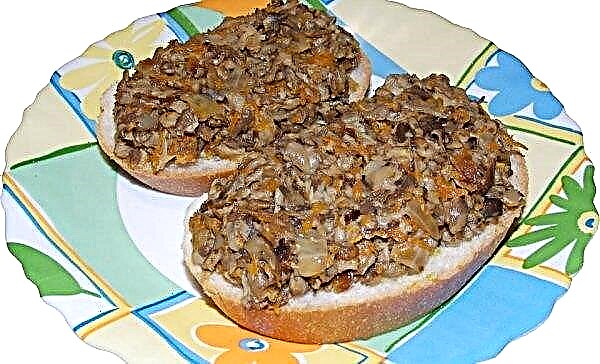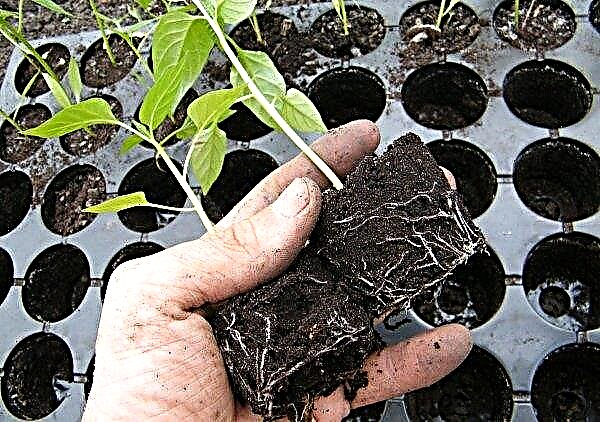Honeysuckle is a popular and popular culture today, it is planted for the sake of harvest and as a decorative decoration of the garden. The plant, in principle, is considered winter-hardy, but in conditions of especially harsh winters, for example, in the Urals, there are some nuances that are discussed in detail in the article today.
Cultivars for the Urals
Honeysuckle calmly tolerates low temperatures, but the winters of Siberia or the Urals are too harsh. Therefore, domestic scientists were engaged in the selection of hybrids that are resistant not only to low temperatures, but also to return frosts, even during flowering. In addition, in conditions of long winters and short summers, it was important to develop plants with an earlier ripening period, which are highly resistant to fungal diseases. Acquaintance with the most suitable varieties for growing in the Urals below.
Did you know? There is an opinion among esotericists that the pulp of fresh honeysuckle flowers rubbed in the palms attached to the forehead is capable of awakening extrasensory abilities in a person.
Cinderella
The compact bush reaches a height of 50–70 cm. The branches are not razlogy, the crown is dense. The oval-shaped foliage is light green in color, with a slightly concave plate. The variety is early, berries can be enjoyed in early June. Productivity is high - up to 5 kg from an adult plant, the first fruiting brings a little more than 1 kg. Fruits weighing 0.7–1.7 g, about 2 cm long. On the surface of the berries, the color of ink, the tubercles characteristic of the culture are expressed. The peel is dense, but not stiff, with a wax coating. Sweet with strawberry aftertaste the berry is universal in application. A variety of winter preparations and fresh desserts are prepared from it.
Fruits weighing 0.7–1.7 g, about 2 cm long. On the surface of the berries, the color of ink, the tubercles characteristic of the culture are expressed. The peel is dense, but not stiff, with a wax coating. Sweet with strawberry aftertaste the berry is universal in application. A variety of winter preparations and fresh desserts are prepared from it.
Amphora
The variety won the love of gardeners for its unpretentiousness and a stable harvest in all weather conditions. A plant up to 1.5 m tall forms a round, dense crown as it grows. Direct shoots are pubescent, painted pink. Emerald-colored foliage is also covered with soft nap. Fruiting friendly up to 2 kg from the bush. The berries ripen in the second half of June, have a dense pulp and a sweet taste with a slight note of acid. Fruit weight 1.5 g, length 2 cm. Berries do not crumble and do not lose their presentation during transportation. Therefore, domestic scientists were engaged in the selection of hybrids that are resistant not only to low temperatures, but also to return frosts, even during flowering. Berries for a long time keep a fresh look in the refrigerator for about a week. Does not lose shape when defrosting after solid freezing.
The berries ripen in the second half of June, have a dense pulp and a sweet taste with a slight note of acid. Fruit weight 1.5 g, length 2 cm. Berries do not crumble and do not lose their presentation during transportation. Therefore, domestic scientists were engaged in the selection of hybrids that are resistant not only to low temperatures, but also to return frosts, even during flowering. Berries for a long time keep a fresh look in the refrigerator for about a week. Does not lose shape when defrosting after solid freezing.
Pride of Bachkar
In the description, the Pride of Bachkar variety is positioned as large-fruited, which corresponds to reality - the length of the fruit is up to 5 cm, weight 3 g. The late ripening variety pleases with a harvest in late July, up to 4 kg can be harvested from one bush. Sour-sweet purple and whitish berries with a small bitterness. A bush 1.6 m high is formed by flexible branches, bending under the weight of the fruit. Therefore, a branching plant needs normalizing pruning. There is a small drawback: the berries are prone to shedding, so you need to collect them without waiting for the ripening.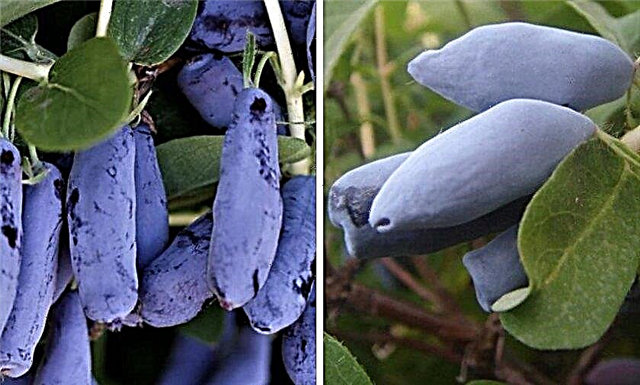
- The advantages of the variety are expressed in such characteristics:
- universality of application;
- good resistance to diseases and pests;
- transportability;
- tolerance of return frosts (-8 ° С).
Did you know? Honeysuckle has a persistent and bright aroma, with hints of orange flowers, tuberose and jasmine. Such a feature is used in the creation of their unique perfume bouquets by such well-known companies as: Yves Rocher, Givenchy, Christian Dior.
Strawberry
A tall plant up to 2 m in height is formed by strong, leafy shoots. It is noteworthy that the shape of the foliage on young and old shoots may differ: elongated or oval. The variety is partially self-fertile, thanks to the dense tassels of inflorescences with bisexual flowers. Ripens in the second decade of June.
Pitcher-shaped berries weigh about 2 g. The color of the dense skin is dark purple. The pulp is juicy, strawberry is distinctly felt in taste (from here the name of a grade has gone). A significant advantage of the plant is the lack of shedding of ripened fruits.

Landing technology
Honeysuckle is usually planted in autumn, but in the conditions of an early and long Ural winter it is better to transfer the procedure to late spring. In this case, a plant with an open root system adapts faster. If the landing is carried out in a container, then choose the time a month before the first frosts.
Seat selection
Landing can be flat or slightly elevated, but not low. Melt and rainwater, cold air gather here, which is detrimental to the roots of culture. The occurrence of underground sources should not be higher than 2 m from the surface of garden soil. It is advisable to choose a site shined by the sun most of the day, closed from drafts.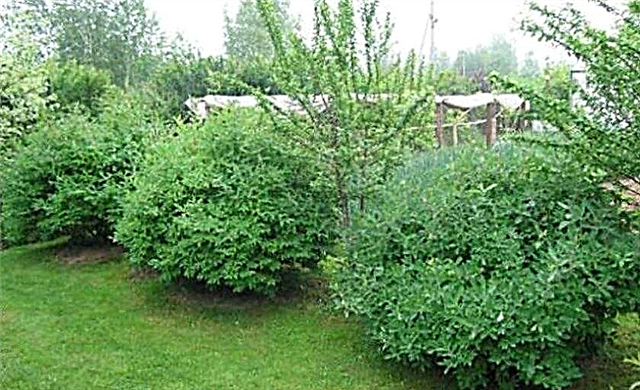
The soil must be nutritious, well structured and moisture permeable. The soil acidity is closer to the neutral value. In the spring, 2 weeks prior to planting, the land on the plot is sprinkled onto the bayonet with shovels, cleaned of plant debris. Dig a hole 1 × 1 m in size, place a drainage layer of 15–20 cm from fragments of brick or pebbles at the bottom. On top of the drainage is 8 kg of compost mixed with the extracted soil.
Seedling selection and preparation
Seedlings of 3-4 years are chosen: they adapt better and begin to bear fruit earlier. A healthy bush has a developed root system of flexible processes, elastic shoots up to 40 cm in length and many developed buds. If a plant is purchased in a container, you need to pay attention to the condition of the soil: it must be clean, without suspicious plaque. It is recommended to treat seedlings with open roots before planting with a fungicide (Fitosporin-M, Bactofit) or soak for 15 minutes in a solution of potassium permanganate 1%. This will serve as a preventive measure against root rot and other diseases.
It is recommended to treat seedlings with open roots before planting with a fungicide (Fitosporin-M, Bactofit) or soak for 15 minutes in a solution of potassium permanganate 1%. This will serve as a preventive measure against root rot and other diseases.
Landing pattern
When landing in the pit, add 50 g of potassium salt and superphosphate. Further actions:
- At the bottom of the pit, a hill is formed on which a seedling with spread roots is placed.
- When filling the plant with soil, you need to monitor the position of the root neck: 3 cm below the surface of the earth.
- The soil needs to be compacted, driving out air pockets.
- After the culture is watered, spending 10 liters of water in small portions.
- At the end of the procedure, the trunk circle is mulched.
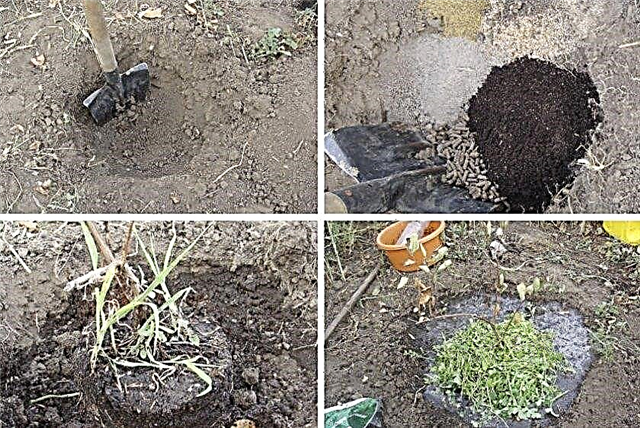
Plant care
The process of caring for honeysuckle in the Urals does not differ from growing in other regions.
Watering
When watering, you need to observe the middle ground: the culture does not tolerate waterlogging and does not withstand prolonged drought. Always watered in portions, waiting for the soil to absorb the next dose. One adult plant needs 20-30 liters of water, it is advisable to first defend it from chlorine. High-quality watering is especially important during flowering and the formation of fruit ovaries.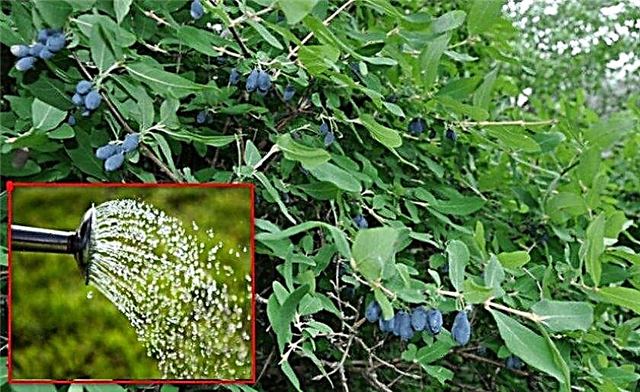
After watering, you need to clear the soil of weeds and carry out loosening to provide air access to the roots. If the gardener does not have time to care, the trunk circle is mulched with any organic material (peat, sawdust).
Fertilizer
In the year of planting, enough nutrients are laid in, so top dressing begins in the second year of life. To accelerate the supply of food to the roots, in the near-stem circle, a groove is drilled around the trunk, into which liquid top dressing is applied:
- in spring (before the swelling of the kidneys) - urea 20 g / 10 l of water;
- during flowering - potassium composition, a solution of wood ash 200 g / 10 l;
- during fruiting - a liquid solution of potassium and phosphorus (50 g each of superphosphate and potassium salt).
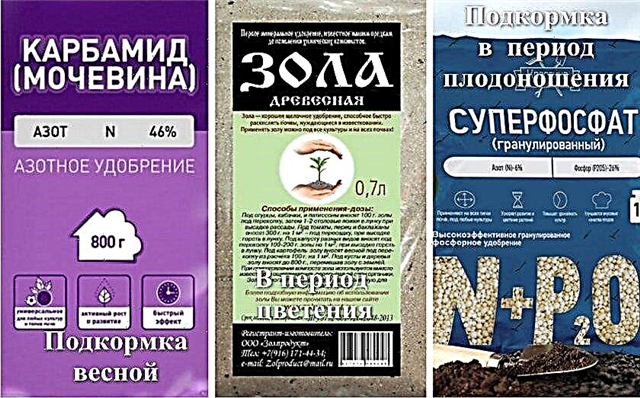 Lack of nutrients can affect the harvest: the fruits do not have time to ripen and gain juice and sugars.
Lack of nutrients can affect the harvest: the fruits do not have time to ripen and gain juice and sugars.
Pruning
Every spring, it is recommended to carry out sanitary pruning, removing damaged shoots. Formative or anti-aging pruning should be done correctly in autumn. At the end of fruiting, it is clearly visible which branches are promising, which are weak. Most gardeners recommend not to shorten the shoots, but cut to the base, thus forming a crown of strong, well-bearing shoots.

All shoots growing inside the crown competing with skeletal branches are cut. Upon reaching 10 years of age, a radical anti-aging pruning is performed. Old, weakly fruitful shoots are cut to a stump. Leave about 10-15 young branches.
Autumn care
In autumn, the near-stem circle is cleaned of plant debris, so as not to create conditions for the wintering of insects. Trimming weak or damaged branches. Adult honeysuckle bushes do not need shelter for the winter. To protect the plant from rodents, the trunk is wrapped with fir branches. You can cover the newly planted bushes, but here they use only a thick layer of mulch and hilling of the lower branches.
You can cover the newly planted bushes, but here they use only a thick layer of mulch and hilling of the lower branches.
Planting and growing honeysuckle in the Urals is not difficult. The culture is winter-hardy and unpretentious. Choosing the most suitable variety for the region will increase the chances of a quality crop.

